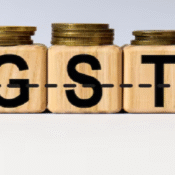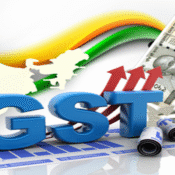
GST Collections : Growth Holds Strong Despite Higher Refunds
India’s Goods and Services Tax (GST) revenues for July 2025 maintained their upward trajectory, reflecting continued economic resilience and robust tax compliance. While gross collections showed healthy growth, higher refunds tempered net gains.
1. Strong Gross Collections
- Gross GST collections for July 2025 stood at ₹1.96 lakh crore, a 7.5% increase compared to the same month last year.
- This marks the seventh consecutive month with collections above ₹1.8 lakh crore, underscoring steady revenue momentum.
- The figure, however, was slightly lower than the April and May highs, suggesting a modest seasonal moderation.
2. Revenue Composition
July’s gross GST revenue comprised:
- CGST: ₹35,470 crore
- SGST: ₹44,059 crore
- IGST: ₹1.03 lakh crore (including ₹51,626 crore from imports)
- Cess: ₹12,670 crore (including ₹1,086 crore from imports)
Domestic receipts rose 6.7% year-on-year, while import-related revenues surged 9.7%, reflecting a combination of stable local demand and strong trade inflows.
3. Net Collections Affected by Higher Refunds
- After accounting for refunds, net GST collections for July were approximately ₹1.69 lakh crore, a modest 1.7% growth over last year.
- Refunds totaled ₹27,147 crore, representing a sharp 66.8% increase compared to the previous year.
- Domestic refunds more than doubled, while export-related refunds grew by around 20%, pointing to higher disbursements under inverted duty structures and export incentives.
4. Consistent Performance in FY26
- From April to July 2025, cumulative gross GST collections reached ₹8.18 lakh crore, up 10.7% year-on-year.
- Despite fluctuations in monthly numbers, the broader trend indicates a healthy fiscal environment with consistent inflows from both domestic and import sources.
5. Economic Outlook
The July GST data highlights three key takeaways:
- Sustained Revenue Strength – Collections continue to reflect stable consumption and improved compliance.
- Impact of Refunds – Higher refund outflows, while reducing net collections, also suggest a more responsive and efficient refund mechanism.
- Balanced Growth Drivers – Both domestic demand and import activity contributed positively to revenues.
Conclusion
July 2025’s GST performance reinforces the view that India’s indirect tax system remains robust, with strong compliance and a healthy economic base. Although higher refunds softened net growth, they also point to a maturing GST framework that is increasingly efficient and taxpayer-friendly.
With the festive season ahead, the coming months may see further momentum, especially if domestic demand continues its steady rise.




